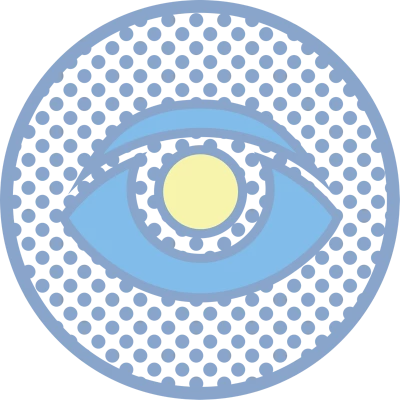Immature Cataract: Early Signs, Causes & Treatment Explained
An immature cataract is an early stage of cataract where the lens of the eye becomes partially cloudy but not completely opaque. Unlike advanced cataracts, some light can still pass through the lens, meaning vision is impaired but not fully lost. Identifying this stage is important because timely diagnosis and management can help maintain quality of life and prevent worsening of the condition.
What is an Immature Cataract?
Definition and Core Characteristics
An immature cataract occurs when the lens starts to lose its clarity, turning cloudy in parts while still allowing some light transmission. This partial opacity can cause objects to appear blurred or dim, especially in bright light or at night. Doctors often describe the lens at this stage as looking “fogged-up,” similar to a misted window that distorts vision but doesn’t block it entirely.

Symptoms of an Immature Cataract
Blurry or Cloudy Vision
One of the earliest signs of an immature cataract is cloudy or hazy vision. Patients often describe it as if they are looking through a thin film or frosted glass, making it harder to focus clearly.
Light Sensitivity and Glare
Immature cataracts often increase sensitivity to bright lights. Sunlight, car headlights, or indoor lamps can cause discomfort or glare, making outdoor activities or night driving more challenging than before.
Faded or Yellowing Colours
Colours may appear less vibrant and take on a yellow or brownish tint. This change in colour perception is subtle at first but becomes noticeable when comparing shades or viewing bright objects.
Halos Around Lights
Many patients notice halos, rings, or starbursts around lights, particularly at night. This is due to the lens scattering light unevenly as it passes through the cloudy areas.
Other Visual Changes
Additional symptoms include difficulty with reading small print, reduced night vision, and frequent changes in eyeglass prescriptions. Some may even notice double vision in one eye caused by the irregular clouding of the lens.
Causes and Risk Factors of Immature Cataracts
The Primary Cause: Ageing
The most common cause is the natural ageing process. Over time, the proteins in the lens break down and clump together, resulting in progressive clouding and the gradual development of cataracts.
Lifestyle and Environmental Factors
Smoking, prolonged exposure to ultraviolet (UV) radiation, and a poor diet can all increase the risk of developing immature cataract. Environmental factors such as pollution and long-term alcohol use may also contribute to early cataract development.
Associated Medical Conditions
Conditions such as diabetes accelerate cataract formation, as high blood sugar damages the lens over time. Long-term use of corticosteroid medications and previous eye injuries are also known risk factors.
Genetics
A family history of cataracts can predispose individuals to develop them at an earlier age than average, highlighting the role of genetics in eye health.
Diagnosis of an Immature Cataract
What to Expect During an Eye Exam
An eye exam usually begins with a discussion about symptoms and medical history, followed by a series of vision and eye health tests to detect cataracts at an early stage.
The Role of the Slit-Lamp Examination
A slit-lamp microscope allows the doctor to examine the lens in detail. In immature cataracts, one key sign is the “iris shadow,” which helps confirm the diagnosis.
Visual Acuity Test
This simple chart test measures how well you can read letters from a distance and helps quantify the impact of the cataract on vision.
Dilated Pupil Exam
Dilating the pupils with special drops allows the ophthalmologist to see the back of the eye more clearly and assess the extent of clouding in the lens.
Why Early Detection is Key
Spotting cataracts early means doctors can monitor progression and recommend surgery at the right time, before vision loss severely impacts daily activities.
Treatment and Management of Immature Cataract
Non-Surgical Management
In the early stages, vision may still be managed with stronger prescription glasses, brighter lighting, or magnifying lenses. Making lifestyle adjustments, such as avoiding nighttime driving, can also be beneficial.
Surgical Options
When vision loss begins interfering with daily tasks, surgery is the standard treatment. Procedures such as phacoemulsification (phaco) with intraocular lens (IOL) implantation are safe, effective, and widely used.
When to Consider Surgery for Immature Cataracts
The decision is based on how much the cataract interferes with work, hobbies, or independence, rather than on how “mature” it looks. Doctors assess the impact of lifestyle as much as clinical signs.
How to Prevent Immature Cataracts?
Protecting Your Eyes from UV Radiation
Wearing sunglasses that block UV rays and wide-brimmed hats outdoors can reduce damage caused by sunlight and delay cataract formation.
Regular Eye Exams
Routine eye checks help detect cataracts early, even before symptoms are obvious. This allows patients to take preventive steps and prepare for timely treatment.
The Role of Diet and Lifestyle
Eating foods rich in antioxidants (leafy greens, fruits, nuts) supports lens health. Quitting smoking, moderating alcohol intake, and managing conditions like diabetes further lower the risk.
Immature vs. Mature Cataracts
Immature cataracts are only partially opaque, meaning some light still reaches the retina, allowing partial vision. Mature cataracts, by contrast, involve a completely opaque lens that blocks nearly all light, often leading to severe vision loss and requiring immediate surgery.
| Feature | Immature Cataract | Mature Cataract |
| Lens Opacity | An immature cataract is partially cloudy. Some light can still pass through the lens. | A mature cataract is completely opaque. The lens is entirely cloudy, blocking most or all light. |
| Visual Impact |
Causes blurry or hazy vision, glare, and reduced contrast. Vision is impaired but still functional for some daily tasks. |
Leads to severe vision loss or even legal blindness. Daily activities, such as reading or driving, become impossible. |
| Appearance |
The lens may have a slightly cloudy or yellowish tint, with a visible “iris shadow” on examination. |
The lens is often visibly white or milky in appearance, making it difficult to see the iris or pupil. |
| Surgical Difficulty |
Typically, it is easier to remove as the lens is not yet hardened. |
More challenging to remove due to the increased density and hardness of the lens. |
| Treatment Urgency |
Surgery is not immediately necessary and may be postponed. Vision can be corrected with glasses or improved with brighter lighting. |
Surgery is highly recommended as soon as possible to restore sight and prevent potential complications. |
| Stage of Development |
Mild to Moderate |
Mild to Moderate |
Conclusion
An immature cataract marks the beginning of vision decline due to lens clouding, but with early detection and proper management, patients can maintain a good quality of life. While non-surgical steps can help in the early stage, cataract surgery remains the definitive treatment when vision loss progresses. Regular eye exams, healthy lifestyle choices, and UV protection play a vital role in prevention and timely care.
Frequently Asked Questions (FAQs) about Immature Cataract
Can an immature cataract be treated without surgery?
Yes, in the early stages, an immature cataract can often be managed with prescription glasses, increased lighting, or lifestyle adjustments. However, surgery becomes necessary once vision loss begins to interfere with daily activities, as non-surgical measures only provide temporary relief.
How fast do immature cataracts progress?
The progression of an immature cataract varies from person to person. Some cataracts remain stable for years, while others worsen more quickly. Regular eye exams are important, as doctors can monitor changes and recommend surgery when vision is significantly affected.
How do you know when it's time to have surgery?
Surgery for an immature cataract is considered when blurred vision, glare, or other symptoms begin to interfere with everyday tasks, such as reading, driving, or working. The decision depends on the lifestyle impact, not solely on the stage or maturity of the cataract.
Is it true that only older people get cataracts?
No, while cataracts are most common in older adults due to natural ageing, they can also occur in younger individuals. Factors such as genetics, diabetes, eye injuries, or long-term medication use may increase risk at an earlier age.
Can cataracts cause other eye problems if left untreated?
Yes, untreated cataracts can progress to advanced stages, severely reducing vision and independence. In rare cases, hypermature cataracts may cause complications such as glaucoma or inflammation, stressing the importance of early detection and timely surgical intervention when needed.
Is an immature cataract the same as a congenital cataract?
No, an immature cataract develops later in life and represents an early stage of age-related cataract. A congenital cataract is present at birth or in early childhood, often due to genetic factors or maternal infections, requiring different management approaches.
This information is for general awareness only and cannot be construed as medical advice. Recovery Timelines, specialist availability, and treatment prices may vary. Please consult our specialists or visit your nearest branch for more details.Insurance coverage and associated costs may vary depending on the treatment and the specific inclusions under your policy. Please visit the insurance desk at your nearest branch for detailed information.

Do not ignore eye trouble!
Now you can reach our senior doctors by booking an online video consultation or a hospital appointment
Book an appointment now